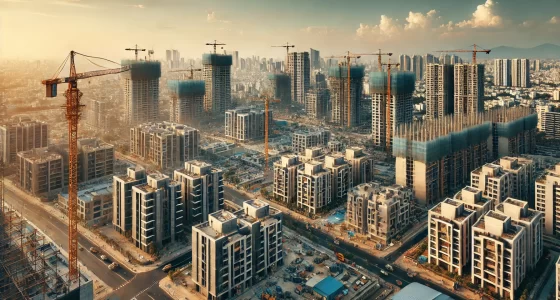- Manufacturing leased spaces have grown 4.5 times in the last three years
- Manufacturing real estate is taking the fastest entry route of leased spaces, growing at 63% Compound Annual Growth Rate (CAGR), post Covid
The Indian manufacturing sector is on a roll, driven by favourable government policies and initiatives. Reflecting this growth, the manufacturing real estate market has shown significant activity in the leased factory format, reaching 13.8 million sq. ft in 2023 from a rudimentary 3.2 million sq. ft in 2020. The same is projected to reach approximately 16 million sq. ft by the end of 2024.
JLL India, the country’s largest real estate consultancy firm today released a report titled ‘Make in India 2.0: Catalyst for Manufacturing Growth,’ that provides insights into the factors driving the growth of India’s manufacturing sector and the lucrative opportunities that await investors seeking to participate in country’s manufacturing success story.
“Leased manufacturing spaces provide the fastest real estate entry routes to manufacturers in most non-polluting industries in India. Ready and built-to-suit leased factories also provide the ‘capex-light’ advantage to manufacturers as the cost of land and buildings is outsourced to developers, acting as a risk mitigation tool,” said Yogesh Shevade, Head of Logistics & Industrial, India, JLL.
The growth is amply exemplified by the fact that the total leasing of manufacturing spaces has increased 4.5 times, from 3.2 million sq. ft in 2020 to 13.8 million sq. ft in 2023. Within the manufacturing segment, several industries are leading the leasing trend. Engineering, Automotive, and Electric Vehicle sectors account for almost 70% of the leasing in 2023.
Electronics and White Goods manufacturing take up a significant share of leasing, at approximately 14%. Other sectors that made a mark in leasing spaces include renewable energy, packaging, life sciences, consumer goods, FMCG and medical devices among others.
“India has emerged as a significant alternative in the regionalization of manufacturing supply chain in the world. Additionally, the huge consumer base of almost 18% of world’s population, makes India a favourable destination for most manufacturing companies” said Shubhendu Kumar, Director, Miebach Consulting Group.
India plans to become a USD 1 trillion export economy by 2030 which will be led by manufacturing sector. In fiscal year 2023, manufacturing exports reached an all-time high of USD 447.46 billion. Investments are pouring in from both domestic and foreign sources. Following the Covid pandemic (April 2020 to March 2023), more than one fourth (26%) of all Foreign Direct Investments (FDI) were directed towards the manufacturing sector. Key sectors such as Electronics, Electric Vehicles, Renewables, and Life Sciences have been instrumental in driving this growth, along with high–focus sectors like the Semiconductors. The Production-Linked Incentive (PLI) scheme has played a crucial role in accelerating project commencement and creating employment opportunities, leading to income growth. Smart factories of the future rely on advanced construction technology and monitoring systems guided by the principles of Industry 4.0.
Manufacturing projects now focus on transitioning from project to product, starting from the business plan stage and continuing through to the operations stage. The emphasis is on developing key skills to become a product project manager, focusing on the overall lifecycle of the product rather than specific project milestones.
Looking ahead, India aspires to become a truly self-reliant developed nation by 2047, in celebration of 100 years of independence. The goal is to become the world’s second-largest economy with a GDP of USD 32 trillion, with the manufacturing sector contributing USD 6.2 trillion to the economy.
Also Read: Green Leasing Flourishes in Real Estate Industry, Quadrupling its Share in the<br>Post-COVID Era:









